KUMC Black History Month Exhibit
Introduction
Explore interactive digital exhibits about the desegregation of KU School of Medicine.
Thank you to staff in the KU Medical Center Archives team for contributions to this project. Visit the Department of History and Philosophy of Medicine to learn more the medical center’s historical collections and events.
Summer 1938
Setting the Scene
During the late 1930's, when the Great Depression gripped America and World War II loomed, segregation in this country persevered. Despite global economic and political changes, cultural divisions within the United States continued to fuel racial and ethnic tensions which often interfered with the educational process for minority students.
These tensions simmered under the surface at the University of Kansas School of Medicine until 1938, when one man challenged convention — and won.
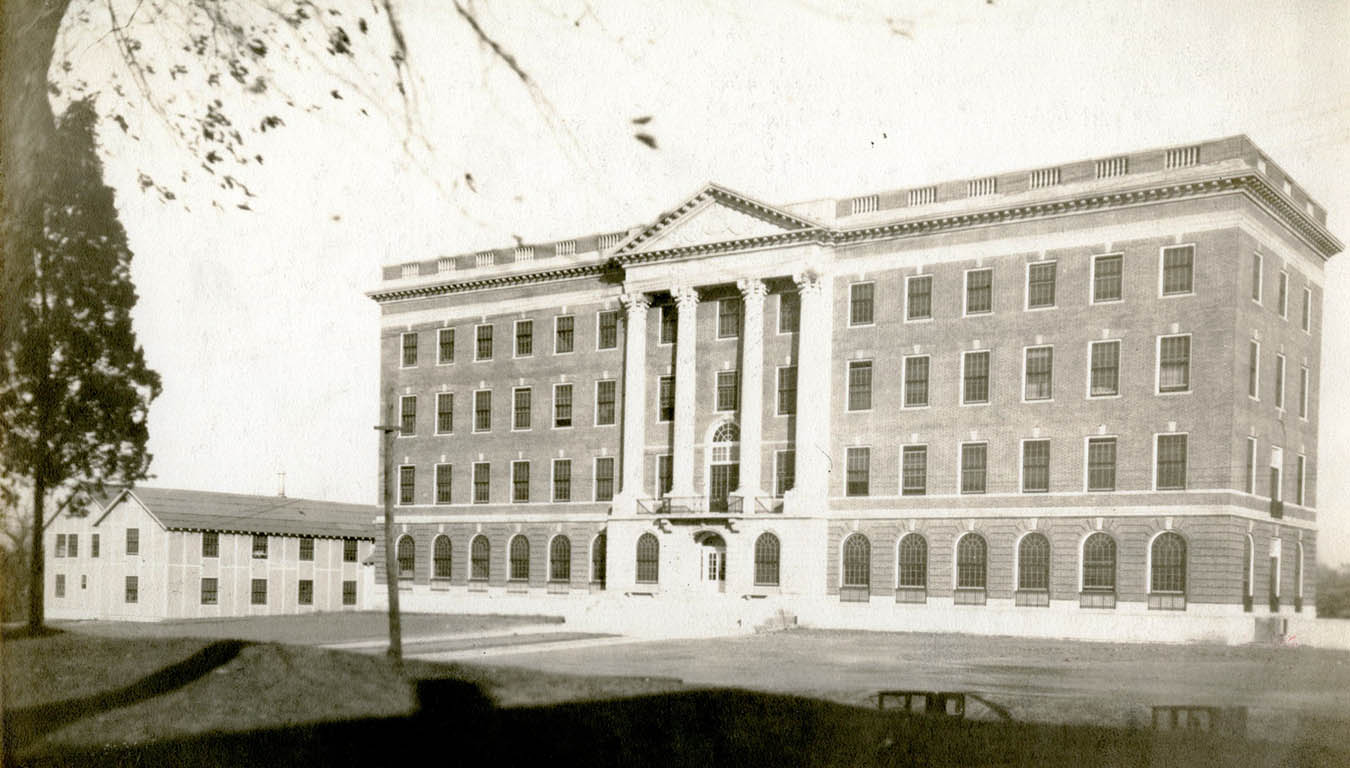
Exterior of Bell Memorial Hospital in Kansas City, Kansas as it appeared in 1924.
First Attempts
African American students were first admitted to the University of Kansas in 1876. Early in the history of the School of Medicine, students spent their first two years at the Lawrence campus. Several black applicants to the program were told they would be accepted into the first two years of medical school, but they would have to transfer to an out-of-state school to finish their medical degree. This discouraged many students from applying.
Donald S. Ferguson first applied to the University of Kansas School of Medicine clinical years in 1926. Ferguson was consistently refused admission because of his race until 1939, when he was finally granted admission to the third year.
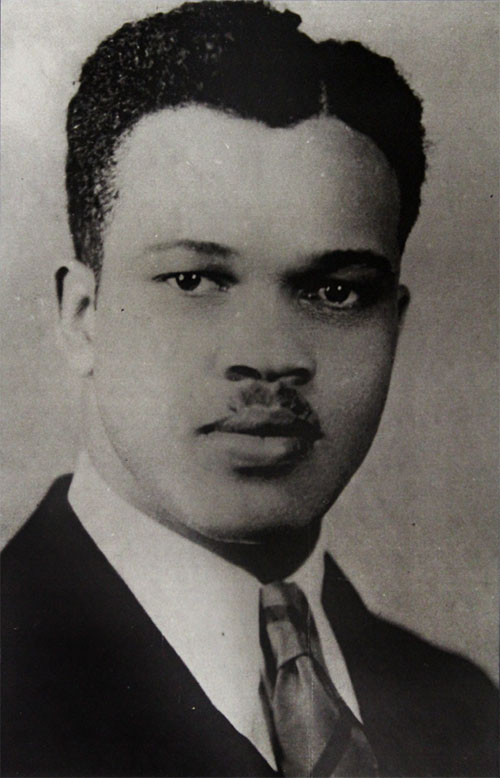
Donald S. Ferguson
In 1937, the first black woman applied to the school of medicine. After she applied, Dean H.R. Wahl advised her that she would likely be accepted for the first two years of medical school, but would not be able to earn her degree at the School of Medicine unless a new, all-black hospital wing was constructed. In this letter, he also expressed his desire to broaden admissions to accept African American students.
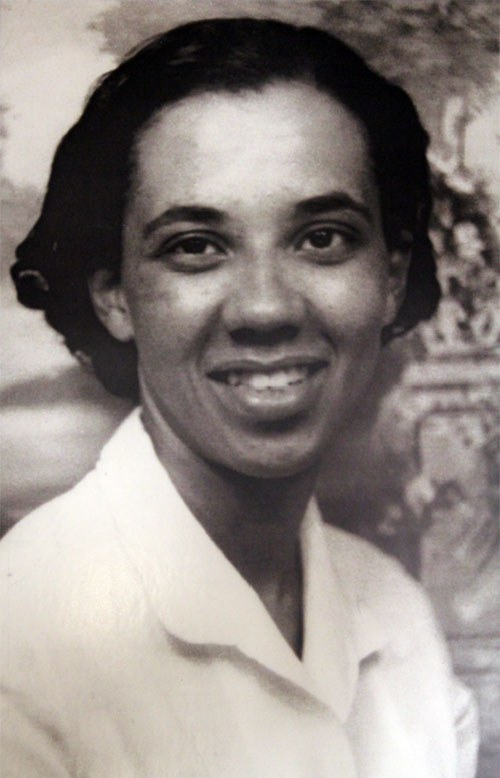
Geraldine Mowbray
"We want you to know that if you enter the medical school, it is only for the first two years after which you would have to transfer to another school."- H.R. Wahl, M.D., Dean, School of Medicine
Transcript of Letter from KU School of Medicine Dean H.R. Wahl to applicant Geraldine Mowbray.
University of Kansas School of Medicine
July 31, 1937
Miss Geraldine Mowbray
3822 Gramercy, N.W.
Washington, D.C.
Dear Miss Mowbray:
The Entrance Committee has again passed upon your application to the medical school before taking final action another point must be considered.
It has been understood that members of your race enter the medical school for the first and second years and cannot be admitted into the clinical years. We want you to know that if you enter the medical school, it is only for the first two years after which you would have to transfer to another school. If you are willing to do this, the members of the committee most likely will consider your application favorably. There may be a chance of continuing as soon as the new negro hospital is erected.
Personally, I am in favor of thus broadening our service to your people. I am not sure however the faculty will agree to this and want it understood that if they did not approve negro students in the clinical years, we would not be obligated in keeping you the third and fourth years.
If you are willing to come with this understanding, it is very likely the committee will act favorably on your admission to the medical school.
Very truly yours,
H.R. Wahl, M.D.
Dean
The Catalyst
In 1938, after receiving a bachelor's degree in zoology, completing the first two years of medical school and achieving the honor of Phi Beta Kappa at the University of Kansas, Edward Vernon Williams was refused admission to the clinical years of medical school at the University of Kansas because he was black. For the completion of his medical degree, he was instructed to apply to out-of-state schools, just as all black medical students before him had to do.
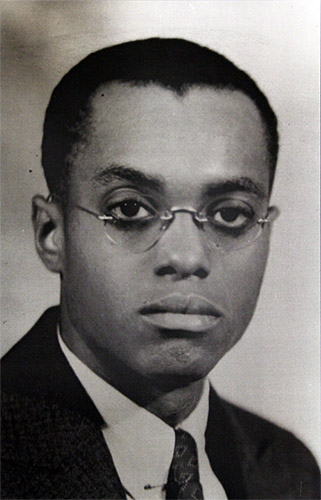
Edward Vernon Williams
Not content with this answer, Williams confronted this convention. With the support of the Young Democrats Club of Sedgwick County Colored Division, Williams contacted the governor of the state of Kansas.
A Flurry of Letters
In July 1938, a group of concerned citizens confronted Gov. Walter A. Huxman with this situation, and he intervened. What followed was a rapid, pointed correspondence between the Kansas Board of Regents, University of Kansas Chancellor E.H. Lindley and School of Medicine Dean H.R. Wahl.
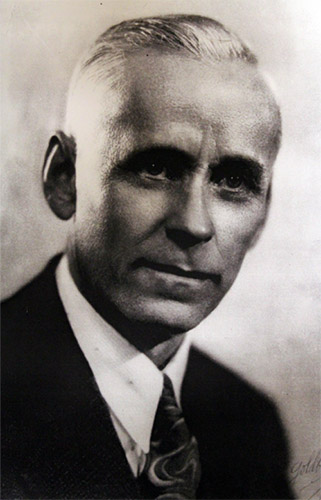
Governor Walter A. Huxman
"...our schools must be and remain open to all classes of citizens."- Walter A. Huxman, Governor of Kansas
Transcript of Letter from Gov. Huxman to Chancellor Lindley.
State of Kansas
Office of the Governor
Topeka
July 11, 1938
Chancellor E.H. Lindley
University of Kansas
Lawrence, Kansas
Dear Chancellor:
I have had a delegation of colored citizens wait up on me who have registered a complaint against the operation of the Medical School, and they have made the charge that during the history of this institution no colored student has ever been permitted to graduate from the Medical School. They seem of the opinion that there is discrimination against the colored students and that they are always advised or asked to go somewhere else to complete their medical training.
I am not writing this letter on the assumption that this charge is true, but I do think it is entitled to a thorough investigation because our schools must be and remain open to all classes of citizens. It would seem that if the records do bear out the statement that no colored student ever has graduated from the Medical School then that would be evidence to substantiate a charge of this kind.
I do wish that you would go into this matter thoroughly. I am sending a copy of this letter to Dean Wahl, also the Board of Regents, and am going to ask that you gentlemen thoroughly check into this matter, and if there is anything to this charge I certainly hope that you will be able to see that such a condition is corrected or that the impression is corrected, because we do not want such an erroneous impression to exist if it is not justified by the facts.
Sincerely yours
Walter A. Huxman
Governor
Conclusion
After serving his term as Kansas governor, Huxman was nominated by President Franklin Roosevelt to the U.S. Court of Appeals for the 10th Circuit in 1939. In 1951, Judge Huxman ruled against segregation in the momentous case, Brown v. Board of Education of Topeka.
More Letters
Though leaders voiced their support for the idea of admitting black students to the School of Medicine, their correspondence shows concerns over white patients' prejudice and a desire to maintain segregation in the hospital. Any change to the school's admission policy hinged upon the construction of a fully modern "Negro Ward."
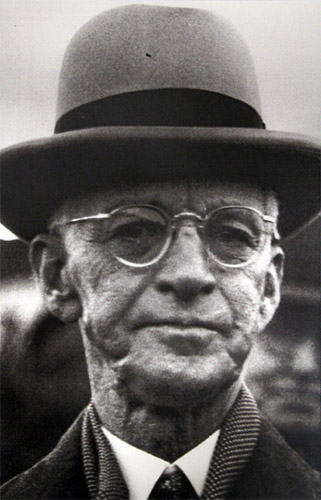
E.H. Lindley, KU Chancellor
Transcript of Letter from Gov. Huxman to Chancellor Lindley.
University of Kansas
July 13, 1938
Governor Walter A. Huxman
State House
Topeka, Kansas
My Dear Governor Huxman:
I am glad to have your inquiry concerning the opportunities for negro students in the Medical School. This is a problem of long standing in most medical schools in the North. We regret that negroes do not have equal opportunities with the whites in this respect.
The chief difficulty lies in the fact that white patients do not wish to have negro interns to serve them. Inasmuch as our Hospital is about seventy-five per cent self-supporting, we have to consider particularly the wishes of our patients in that regard.
It is hoped that, with the construction of the modern fire-proof Negro Ward in connection with the Hospital, there may be some opportunity for negro students, although the variety of clinical cases will naturally be smaller in the Negro Ward than in the entire Hospital...
We, of course, wish to give qualified negro students every opportunity that conditions permit. And in the University proper they have been given a large measure of such opportunities, which include selection to honorary societies.
Dean Wahl and I will be glad, of course, to discuss the matter more fully with you, if you so desire.
With appreciation of your interest, and with every good wish, I am
Very sincerely yours,
Chancellor
Transcript of the reply from Gov. Huxman to Chancellor Lindley.
State of Kansas
Office of the Governor
Topeka
July 14, 1938
Chancellor E.H. Lindley
University of Kansas
Lawrence, Kansas
Dear Chancellor Lindley:
I have your letter of July 13 regarding the status of negro students in the Medical School. Of course, I realize the difficulties that confront us in this matter, yet it seems to me to b a very poor policy for the state of Kansas to say to those colored citizens that they cannot graduate from the state medical institution.
I am wondering if we are not overemphasizing the private help we get for the medical school. It seems to me that under no circumstances does such help justify us in dividing the segregating our students along racial lines and close the doors of a state institution to a certain class of students.
I do not want to be contentious about this matter, and don't want to be unreasonable, but it just does seem to me that we should do something about this situation. If you and Dr. Wahl desire to have a conference with me about it I will be more than pleased to arrange for such a conference. I do not know what we could do that would create more confidence in our state government and in the fact that it is a government for all the people than to make it possible for at least one negro student to become a graduate of our medical school. It seems to me it isn't a very good advertisement for our state university and for the medical school when it is being said and broadcast about that qualified colored students are forced to leave the state to complete their medical education....
Sincerely yours
Walter A. Huxman
Governor
Transition
In little more than a week, what began as private correspondence made its way to the press and became public. Chancellor Lindley and Dean Wahl knew that they could not continue to be ambiguous about this issue and met to discuss it with Governor Huxman.
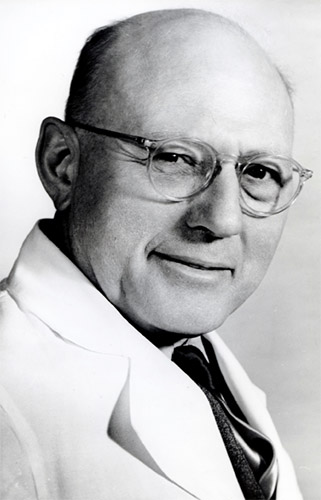
H.R. Wahl, School of Medicine Dean
Transcript of a letter from Chancellor Lindley to Dean Wahl
University of Kansas
July 15, 1938
Dr. H.R. Wahl
School of Medicine
Kansas City, Kansas
Dear Dr. Wahl:
I am enclosing a copy of a letter from the Governor, which is, I fear, not very conciliatory. I think you should arrange to go with someone, possibly Dr. Snyder, if he is willing, to discuss the matter with the Governor. If I am here, I shall be glad to join you. You may think of somebody in your faculty or at Kansas City, Kansas, who has our point of view and who will join you in presenting it effectively to the Governor.
Faithfully yours,
Chancellor
Transcript of a news article titled, "Must Okay Negro Medics."
July 19, 1938
Must Okay Negro Medics
Huxman Intends to See No Color Line at K.U. Medical School
Negro medical students must be permitted to graduate from the state university medical school -- or else. At least that may be the position of governor Huxman if a conference at the statehouse this afternoon doesn't produce a solution to an annoying problem.
Recently a medical student who had completed a three-year preliminary course at Kansas university advised the governor that he had been denied permission to go to Bell Memorial hospital for his final course and a chance to win a certificate to practice medicine in Kansas. The governor this afternoon is holding a conference with Chancellor E.H. Lindley and Dean H.R. Wahl, of the medical school.
Governor Huxman made no threats as to the course he would take if an iron-clad university rule against graduation of Negro medical students is encountered. He did announce at a press conference, however, that the matter would go before the state board of regents at a meeting here Thursday provided a decision is not reached in the conference in his office this afternoon.
(Kansas State Historical Society)
Small Change, Big Consequences
The correspondence and meeting between Huxman, Lindley and Wahl concluded with an assembly of the Kansas Board of Regents on August 6, 1938. The members of the board voted unanimously to admit students of color to the KU School of Medicine.
Transcript of the August 6, 1938 Kansas Board of Regents meeting minutes.
Board of Regents
Minutes
Topeka, Kansas
August 6, 1938
The following resolution was unanimously adopted by the board -
Whereas complaints have been made that colored students have been refused admittance to the Medical School of Kansas University at Kansas City, Kansas, and
Whereas it is the unanimous opinion of this Board of Regents that colored students with necessary scholastic standing should be admitted to the Medical School of Kansas University at Kansas City, Kansas
And whereas, the Board has been informed that a negro medical student has met the scholastic requirements and will be promoted to the third year, recognizing the equal education opportunity in Kansas.
We therefore agree with the policy of the Promotion Committee of the Medical School of the University of Kansas.
Things Continue
On August 8, 1938, the Committee on Promotion, Advanced Standing and Graduation officially admitted Edward Vernon Williams to the junior class of the University of Kansas School of Medicine, drawing praise from African American communities across Kansas.
Transcript of the letter from the Sedgwick County Colored Women's Democrat Club to Governor Huxman.
Young Democrats Club of Sedgwick County
Colored Division
1215 East Ninth Street
Wichita, Kansas
August 19, 1938
Honorable Governor Walter A. Huxman
State Capitol,
Topeka, Kansas.
Dear sir:
We the members of The Sedgwick County Colored Women's Democrat Club wish to express our sincere thanks to you for the effort you are making to give our group, the Colored people of the state of Kansas, the advantages that have been heretofore denied us. We deem it a step in the right direction and we are proud that the step was made by the governor of [our] own party. Assuring you that we are one hundred per cent for you in the coming election and again thanking you for your humanitarian undertaking, we beg to remain
Very sincerely yours,
Mrs. Mayme Moore, President
Mrs. J.E. Farmer, Corresponding-secretary
Adjusting to Change
The admission of black students to the School of Medicine was contingent upon the construction of a new ward, where black students would treat black patients. Previously, black patients had been treated by white doctors and nurses in the "barracks," which a KU report called a "disgrace to the state." Eaton Hall was constructed between 1938 and 1940, alleviating concerns about alienating the white public. Though one problem was solved, the racist attitude of wider society would force the full integration of the hospital several decades into the future.
Transcript of the University of Kansas School of Medicine and University of Kansas Hospitals Biennial Report, 1937-1938.
University of Kansas School of Medicine and University of Kansas Hospital Biennial Report, 1937-1938
Plans for the third unit appropriated by the State Legislature, the Negro building, are now being drawn. The legislature provided $75,000 for this building and P.W.A. provided $61,363 to complete and equip this unit. It will provide a three-story building with basement, and should be ready for occupancy next summer. The unit will provide a complete hospital with operating room, laboratory, and diagnostic facilities for colored patients. With the impending opening of this Negro ward, we have recently admitted a colored student to the medical school, he will spend most of his time in the new building. With the completion of this unit, and the completion and equipment of the Clinic Building, the old barracks building, now a disgrace to the state, will be torn down and removed.
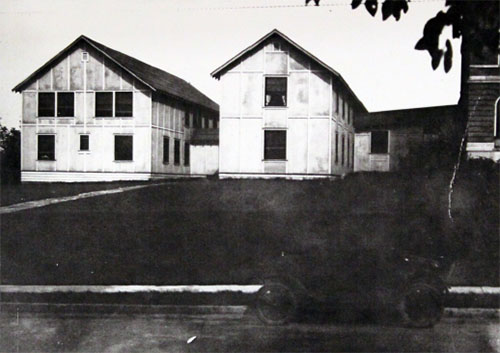
Old Barracks Building, "Colored Ward" location
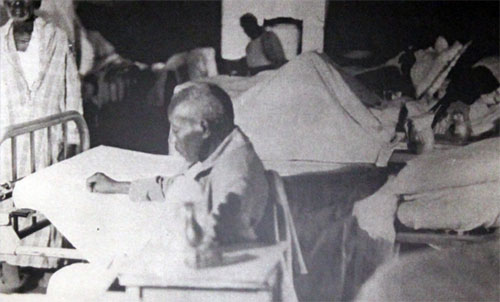
Men's Ward - Barracks
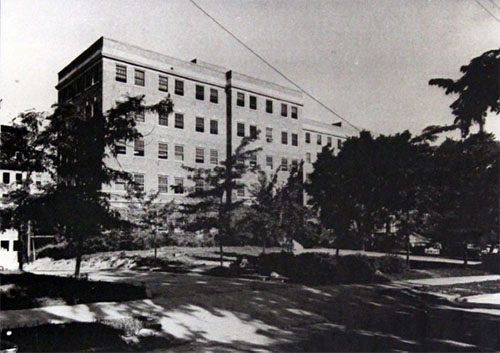
Eaton Ward, completed in 1940
Legacy of Edward Vernon Willams
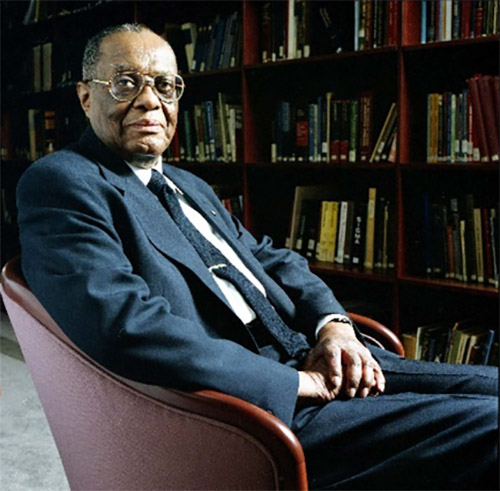
Vernon Edward Williams, M.D.
Although Edward Vernon Williams broke an important barrier during the summer of 1938, many social and cultural obstacles remained for black students seeking admission to the University of Kansas School of Medicine. Eventually such walls were breached.
In 1941, Edward Vernon Williams became the first African American graduate of KU School of Medicine. In 1942, Donald Ferguson became the second. Since that time, more than 167 African American physicians have received their medical degrees from this institution. This certainly indicates a brighter future for minority students in the State of Kansas.
In 1991, Edward Vernon Williams, M.D., was invited back to the University of Kansas Medical Center to commemorate the 50th anniversary of his graduation. He was honored by the KU School of Medicine for his pioneering spirit and lifetime achievements.
"We remember the courage and commitment of a true pioneer."- Barbara Atkinson, M.D., University of Kansas Medical Center Executive Vice Chancellor, KU School of Medicine Executive Dean, January 4, 2007
Dr. Williams died on December 31, 2006 at the age of 94, after practicing medicine in Muskegon, Michigan for over 50 years. During his long career, he served on the Michigan State Board of Registration, the American Red Cross, American Cancer Society, American Medical Association, Urban League of Greater Muskegon, and the Phillip Chapel AME Church. He was also an accomplished concert pianist.
He was buried at the Mona View Cemetery in Muskegon, Michigan on January 5, 2007.